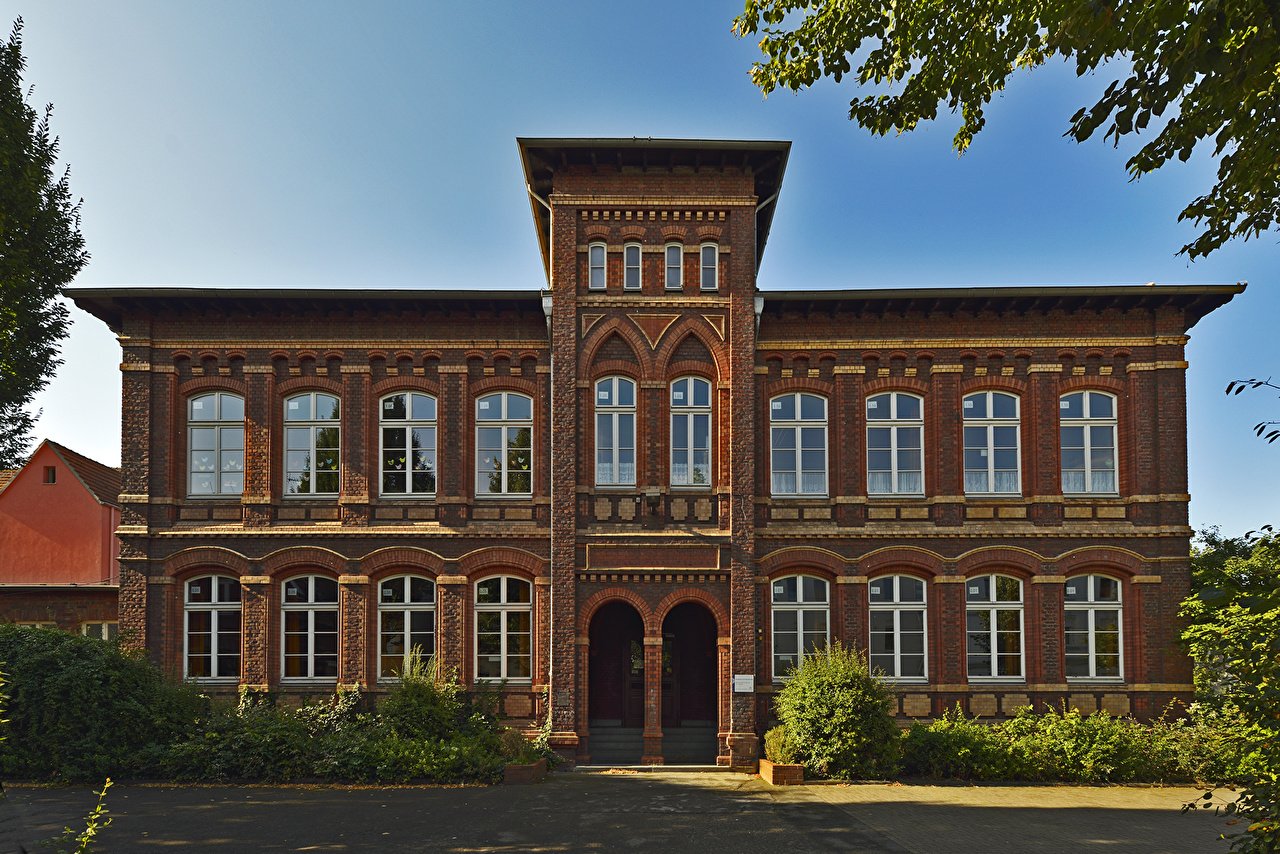#11146. Majestic Brick Facade with Neo-Gothic Elements

Before us stands a magnificent example of brick architecture from the late 19th - early 20th century, executed in an eclectic style with neo-Gothic elements. This two-story symmetrical building with a central risalit demonstrates masterful use of red brick combined with decorative elements.
The facade of the building is characterized by strict symmetry and a rhythmic arrangement of window openings. The central risalit, projecting forward, is emphasized by a high attic and crowned with a characteristic cornice with denticles. The arched windows on the second floor of the central section, designed in neo-Gothic style, create a striking accent against the backdrop of the more austere rectangular windows of the main volume.
The detailing of the facade is impressive: decorative brick belts between floors, elegant cornices, rusticated masonry in the lower part of the building, and carefully crafted window surrounds. Two symmetrical entrance portals with arched completions give the building both monumentality and an inviting character. Decorative elements beneath the second-floor windows and above the first-floor windows demonstrate the mastery of brickwork.
In modern private construction, several techniques can be borrowed from this historical example: the symmetrical composition of the facade, the use of decorative brickwork to accentuate important elements, the creation of an expressive central element (risalit), the application of contrasting materials or textures to highlight architectural details, and the rhythmic arrangement of window openings. A contemporary interpretation of these classical techniques can add individuality and elegance to any private home.